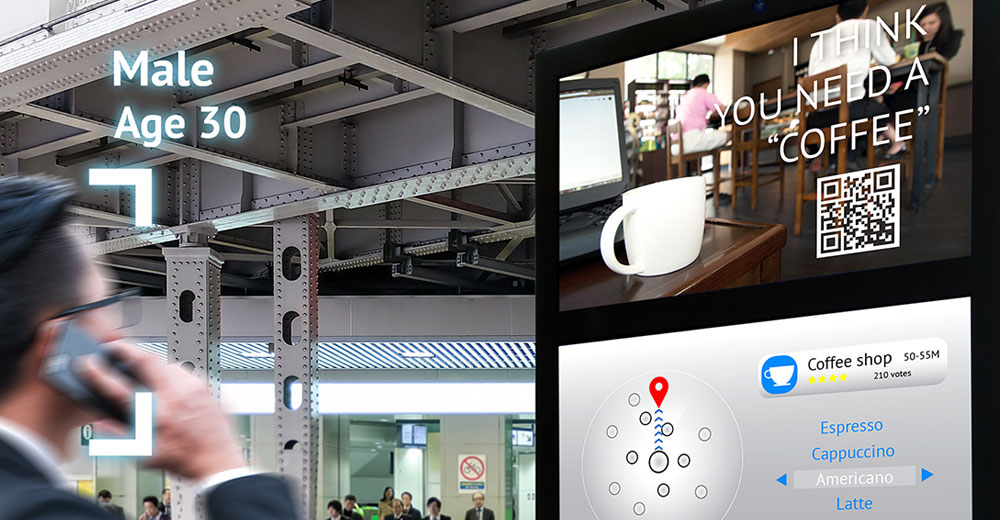The concept of artificial intelligence improving emotional intelligence might sound like a paradox. A coded algorithm is not the most natural supplement to human empathy, after all. However, customer experience (CX) leaders understand that AI-powered technologies can transform the way businesses understand core audiences.
Customer service agents benefit from real-time and historical sentiment analysis that takes the guesswork out of reading emotions — especially on phone calls or text-based digital interactions. This gives businesses the insight they need to deliver hyper-personalized experiences. In fact, AI-driven sentiment analysis data has a bevy of uses that elevate emotional intelligence among CX professionals.
For most companies, the process of measuring customer satisfaction occurs far too late in the journey. Traditional customer feedback surveys typically rate experiences after the fact, resulting in stale data that does not help agents in the moment. Proactive customer service requires real-time analysis for positive resolutions and more impactful connections.
Thanks to AI-driven natural language processing, machine learning, and computational linguistics, customer service professionals can see accurate sentiment analysis data before their conversation even begins, promoting a service culture that emphasizes empathy and relationship-building.
Following are a few ways AI-powered technologies can improve a business’ emotional intelligence and, therefore, the overall customer experience.
1. Emotional Intelligence in Self-Service
AI-powered self-service options are commonplace. For example, self-service channels such as chatbots and virtual agents heavily rely on AI and consequently have become more and more dependable.
In fact, consumer research shows that chatbot usage jumped almost 10 percent from the end of 2018 to the end of 2019. Today, virtual agents can hold dynamic conversations while performing routine tasks, giving customers the necessary tools to be resourceful and self-reliant. This translates to quicker resolutions at a lower cost while allowing contact center agents to focus their attention on more high-impact issues.
Beyond automated-response capabilities, self-service channels are also aided by AI-driven sentiment analysis data. This information can diagnose when a self-service experience is not as satisfying or as useful as an agent-assisted interaction would be.
When a live agent is needed, sentiment analysis can recognize the urgency and route the customer accordingly. The insights this technology provides do not stop there. Sentiment analysis data can be layered on top of intelligent routing, connecting a customer with the appropriate agent in real-time, based, in part, on personality.
2. Predictive Behavioral Routing
Traditionally, contact centers route customer queries to the first available agent capable of solving the issue, even if the agent is not the best personality and communication style match for the customer. Back then, routing failed to take into account individual compatibility, reducing customer service to a speed dating process, where interactions could be messy and unpredictable.
Predictive behavioral routing intelligently pairs the right customer with the right agent by matching the personality profile and communication style of the customer with the most compatible agent. This matchmaking tool can even enable contact centers to recalibrate their routing settings based on a specific goal, such as improving CSAT or maximizing upsell rates.
Powerful AI algorithms that have been trained and refined over millions of customer service interactions make predictive behavioral routing possible. This technology can ascertain whether a customer is compassionate and caring, logical and reasonable, creative and playful, or a contrast of these personalities.
Every touchpoint informs a unique profile that accounts for these various characteristics. In essence, behavioral analysis reveals the person behind the text in a social media post or the voice on the other end of the phone. Contact centers not only can determine the emotional makeup of a customer but also can route that customer to an agent emotionally equipped to supply exceptional customer service.
Because predictive behavioral routing pairs customers with the most suitable agents, less energy is needed for the two to get on the same wavelength. As a result, contact center agents are empowered to create lasting connections with customers because the baseline communication standard is set.
Gone are the days when proficiency, rather than emotional compatibility, was the single significant factor to contact center routing. Customers can now engage with agents who are simultaneously competent and empathetic enough to handle their queries, helping reduce average handle time by optimizing exchanges.
3. Elevating Agent-Assisted Experiences
Intelligent routing alone does not guarantee perfect NPS and CSAT results. Even the most empathetic of employees can encounter communication gaps that impede excellent service. Presenting customer sentiment, recommending next-best actions, and removing the distractions of mundane tasks for agents at the time of service can help bridge those rifts, mitigating risks of conflict or misunderstanding.
This technology assesses customer input from a variety of touchpoints, including phone calls, text messages, emails, chat sessions, and even social media comments. After labeling these communicated emotions “positive,” “neutral,” or “negative,” these solutions can create a detailed customer profile, providing contact center agents with a comprehensive understanding of relevant preferences and needs. With this data, agents can then prioritize the more technical aspects of a complex issue to ensure first-contact resolution.
For contact centers, AI does more than measure sentiment. It provides value to agents outside the emotional domain. It also can automate responsibilities and procedures that inevitably tack on unnecessary time and energy to each interaction. Routine functions, such as data entry, switching applications, and internal communications, are automated for agents.
While the rise in automation has spurred some concern about how it will impact the workforce, AI has proven to be a reliable co-pilot for contact center agents providing customer service. In the digital age, agents might have to juggle multiple customers at once, all while operating their various back-end systems. Eradicating mundane tasks undoubtedly helps.
Even more helpful to contact centers are automated cues that alert agents to advise next steps. By analyzing a massive volume of customer interactions, AI can discern the proper course of action for a specific inquiry and offer suggested responses. In these instances, AI can distinguish what response — established via all of the other queries that concern the same and similar matters — will most likely resolve the issue.
AI brings a push-pull dynamic to contact centers. On one hand, it gently pushes agents into a workspace that values empathy by informing them about a customer’s personality and communication style. On the other, AI pulls agents away from the contact center’s back-end systems by automating traditional, day-to-day workloads. In both cases, AI improves the customer-agent experience because relationship building becomes the central priority of CX.
4. Detecting Root Cause
The key to unlocking exceptional customer service is identifying systemic flaws and vulnerabilities. Determining the origins of a customer’s frustration will help resolve not only the issue at hand but also a contact center’s shortcomings going forward.
AI in the contact center is more than just a feelings detector. It can extract powerful insights such as root cause sources of customer frustration. Separate from negative sentiment, customer frustration may be the most accurate detector of customer satisfaction, such as NPS, and any underlying service issues.
As CX leaders know, there are a lot of factors and causes that might induce frustration. For example, a brand’s product or service may fail to meet expectations. AI-perceived root cause — detected from interaction analytics — can single out product defects, thereby opening up the possibility of product redesign.
It also can shed light on macro trends for a company. Removing a root cause issue that exists for many customers will ensure that customer service teams do not need to worry about the predicament in the future, cutting down on contact volume.
In addition to the root cause, interaction analytics tools that rely on speech and text understanding are able to unearth compliance issues and observe training opportunities as well. As a result, finding and fixing these aberrations can lead to wholesale changes for customer service teams.
Reconciling a systemic problem naturally ends a pain point for customers, which in turn reduces customer frustration. Contact center leaders cannot ignore the training element as well. Every problem presents an opportunity. Identifying structural issues only makes agents more aware of where the traps are hidden, improving individual agent performance and contact center operations at large.
Better Business Outcomes
With the help of AI-powered technologies available today, CX leaders can now see a holistic picture of each and every customer they deal with, bringing them one step closer to achieving mutual understandings and satisfied customer experiences.
While AI may take some of the load off of agents, it does not dehumanize the experience for customers. On the contrary, AI optimizes the workflow of agents, allowing them to embrace personal and powerful connections with customers.
Better connections with customers lead to more loyal consumers — and loyal consumers are primed to turn into brand advocates. Cultivating a satisfied core audience should be the goal of every company, small business, or enterprise, and the latest technologies only make positive engagement easier.
As more and more consumers choose digital and self-service channels, AI has become an essential tool for the customer experience.













































Social CRM
See all Social CRM